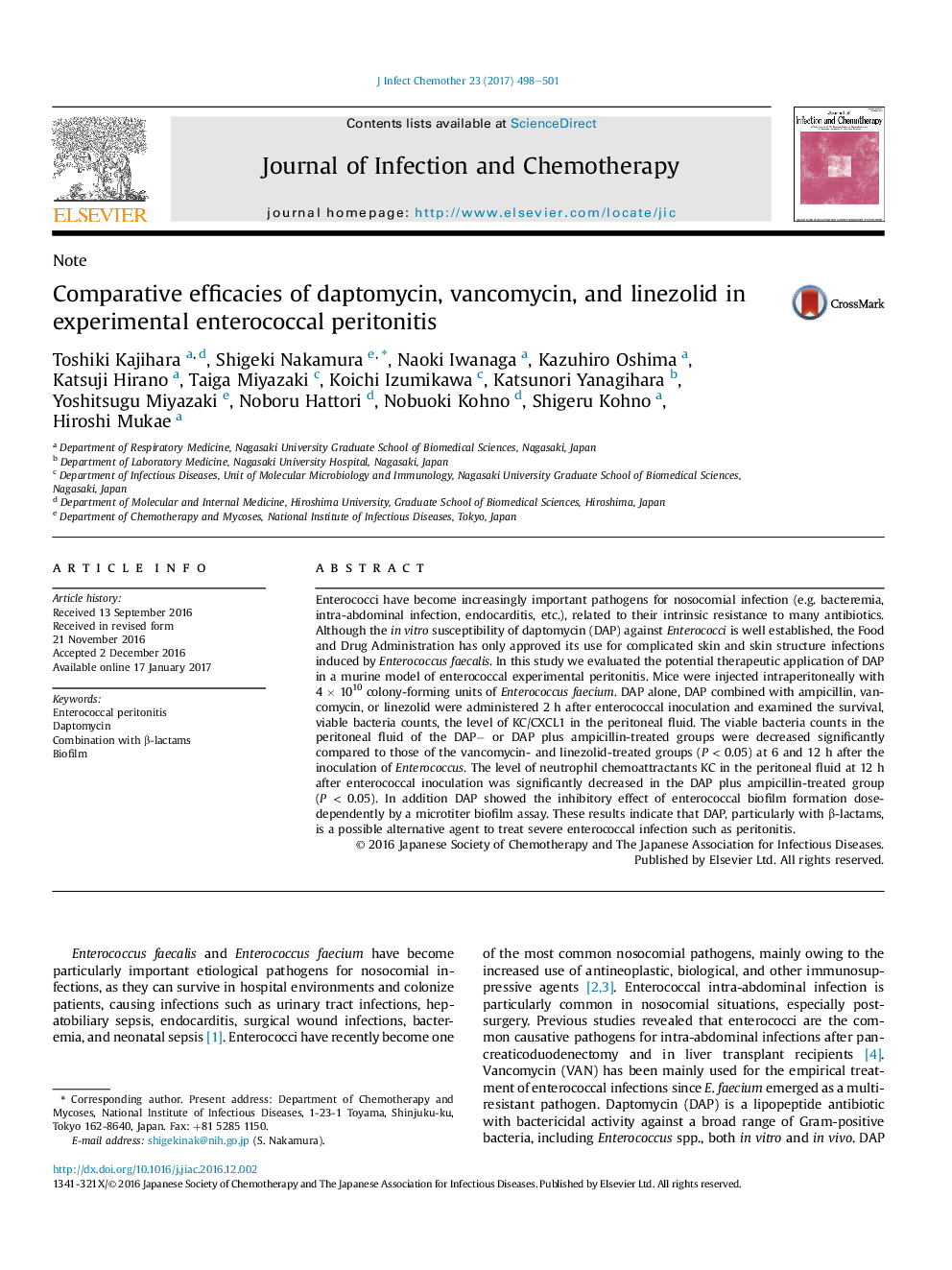| Article ID | Journal | Published Year | Pages | File Type |
|---|---|---|---|---|
| 5668946 | Journal of Infection and Chemotherapy | 2017 | 4 Pages |
Enterococci have become increasingly important pathogens for nosocomial infection (e.g. bacteremia, intra-abdominal infection, endocarditis, etc.), related to their intrinsic resistance to many antibiotics. Although the in vitro susceptibility of daptomycin (DAP) against Enterococci is well established, the Food and Drug Administration has only approved its use for complicated skin and skin structure infections induced by Enterococcus faecalis. In this study we evaluated the potential therapeutic application of DAP in a murine model of enterococcal experimental peritonitis. Mice were injected intraperitoneally with 4 Ã 1010 colony-forming units of Enterococcus faecium. DAP alone, DAP combined with ampicillin, vancomycin, or linezolid were administered 2 h after enterococcal inoculation and examined the survival, viable bacteria counts, the level of KC/CXCL1 in the peritoneal fluid. The viable bacteria counts in the peritoneal fluid of the DAPâ or DAP plus ampicillin-treated groups were decreased significantly compared to those of the vancomycin- and linezolid-treated groups (P < 0.05) at 6 and 12 h after the inoculation of Enterococcus. The level of neutrophil chemoattractants KC in the peritoneal fluid at 12 h after enterococcal inoculation was significantly decreased in the DAP plus ampicillin-treated group (P < 0.05). In addition DAP showed the inhibitory effect of enterococcal biofilm formation dose-dependently by a microtiter biofilm assay. These results indicate that DAP, particularly with β-lactams, is a possible alternative agent to treat severe enterococcal infection such as peritonitis.
